We may earn revenue from the products available on this page and participate in affiliate programs. Learn More ›
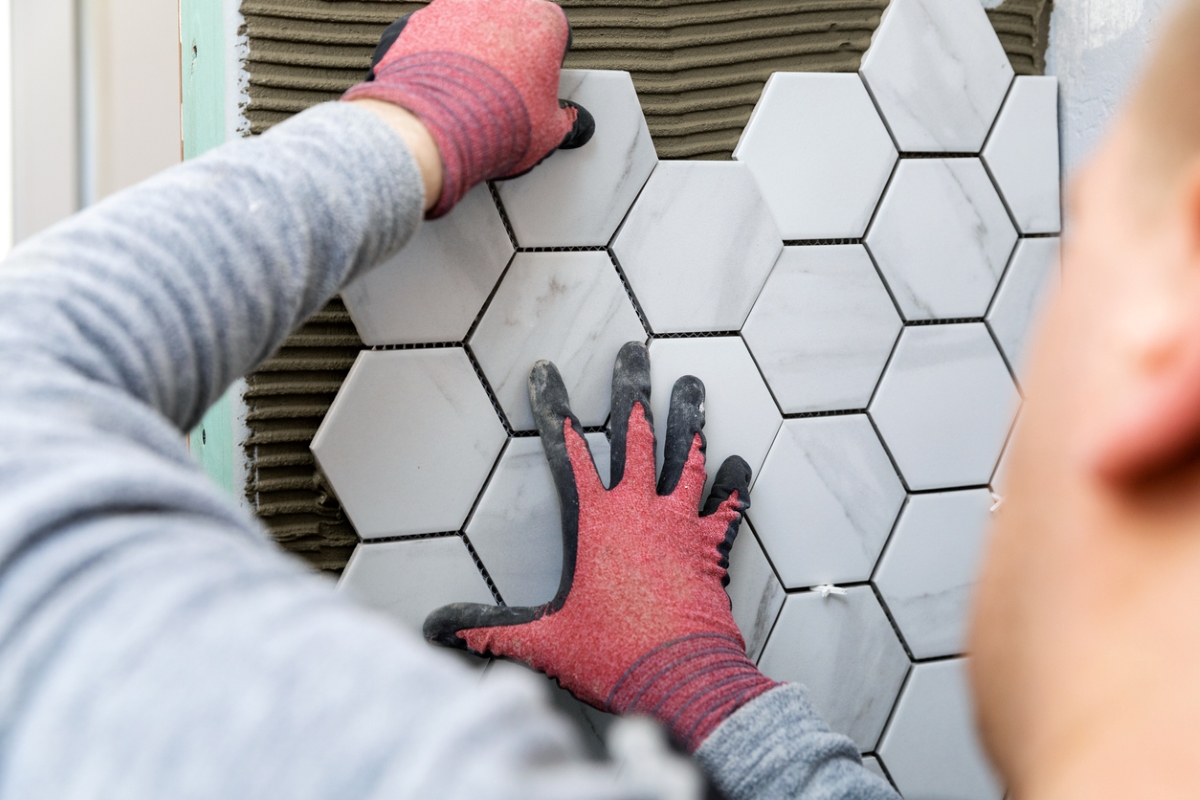
When it comes to durable bathroom materials, few surpass the utility and great looks of tile. While tiles are frequently used on floors, they can also dress up a bathroom wall, and protect it from moisture. While tiled walls are commonly found in luxury interiors and hotels, they can be just as well suited to the average neighborhood home. Best of all, with some guidance and the right tiling tools, they aren’t that hard to install. This guide will explain how to tile a bathroom wall so DIYers can bring this high-end vibe to their bathroom space.
Tools & Materials
Bobvila.com may earn a commission from purchases made through these links.
- Work gloves
- Respirator
- Tape measure
- Level
- Drill
- Paddle mixer
- Bucket
- ¼-inch trowel for large tile, ⅛-inch trowel for smaller tile
- Wet saw or tile cutter
- Grout float
- Sponges
- Scrap wood (it must be straight)
- Tile spacers
- Screws
- Tile
- Thinset
- Grout
- Tile and grout sealer
Project Overview
Working Time: Approximately 6 hours for an 8-foot by 8-foot wall
Total Time: 3 to 4 days
Skill Level: Intermediate
Estimated Cost: Between $2 and $50 per square foot, depending on material.
Tile is the biggest expense, and tile prices vary widely. Thinset and grout cost less than 50 cents per square foot of tiled wall.
Before You Begin
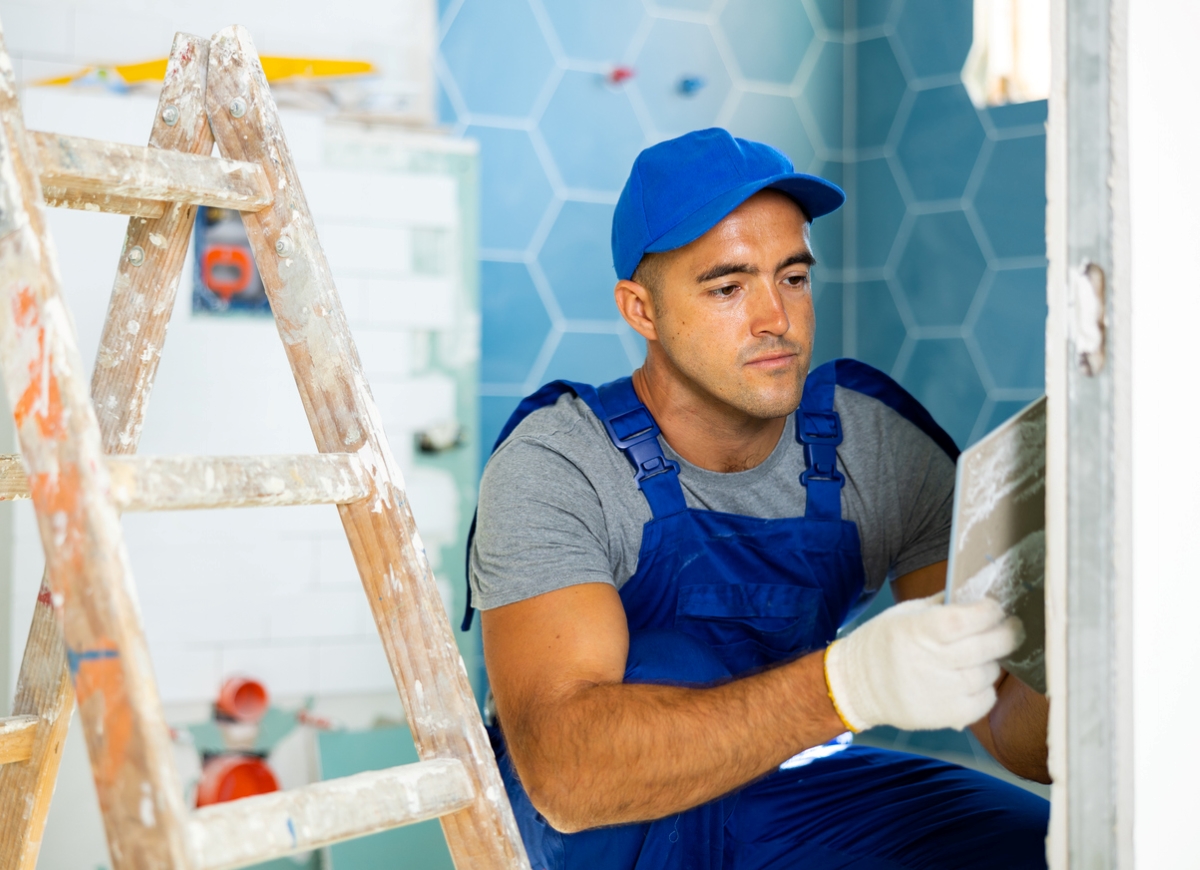
Overall, tiling is a relatively safe project. There are, however, a couple of safety considerations to keep in mind while you work:
- Cut tiles can have very sharp edges. It may not feel convenient to work wearing gloves, but it is necessary (and is advised) to wear them to avoid cuts.
- Wear a respirator mask when mixing powdered mortar, thinset, or grout. These products often create very fine dust that can irritate airways. These powders can also remove the moisture from skin. When you’re working on a tiling project, get into the habit of moisturizing your hands frequently, and wear gloves whenever possible.
Before you begin tiling, make sure that the bathroom wall is in good shape before adhering tiles to it. Walls that are heavily bowed, cracked, or water damaged aren’t good candidates for tile. In these cases, it may be necessary to remove the drywall and replace it, either with more drywall or concrete board.
Tiling a Bathroom Wall
Tiling a bathroom wall takes a little patience, but this common bathroom upgrade is well within the abilities of a typical DIYer. This guide will explain the basic steps for tiling a bathroom wall and offer some useful tips along the way.
STEP 1: Choose your tile.

The first step is the most fun: choosing the type of tile, and the grout to match it. While it may seem like one kind of tile is as good as another, that’s not the case. First of all, there are differences between floor tiles and wall tiles. Floor tiles are durable, while wall tiles tend to be thinner, softer, and easier to crack, which is why they should be used only on walls.
Floor tile options tend to be limited, but folks shopping for wall tiles have seemingly endless possibilities. Because DIYers can use almost any kind of tile on their walls, making a final choice can be paralyzing: Ceramic, porcelain, or glass? Classic white or colorful? Traditional subway tile, playful mosaic, or bold squares? Here’s a suggestion that may make the decision easier: Tiles that are overly trendy, super modern, or ornate may not age well, and removing tile isn’t a lot of fun. That’s why it’s always a good idea to opt for colors and patterns that are classic and can stand the test of time.
RELATED: How to Install Tile the Right Way
STEP 2: Prep the wall for tiling.
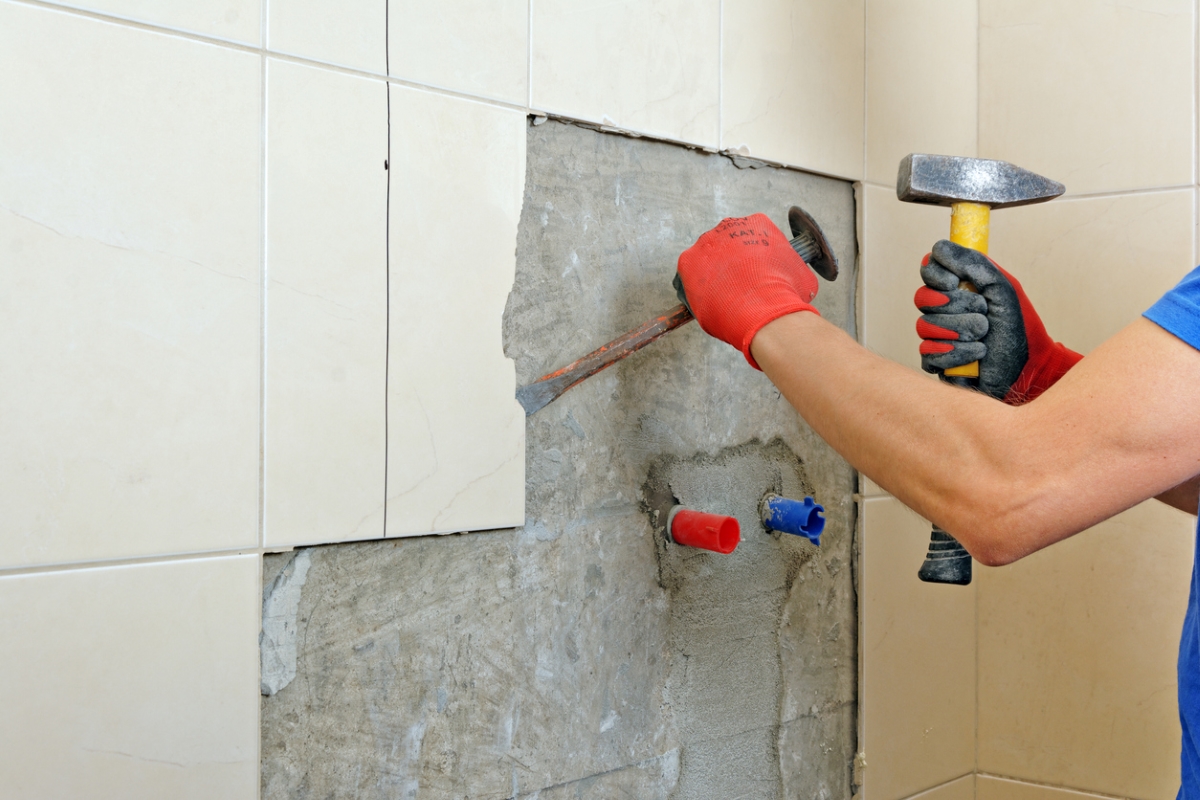
There is often some wall prep work required before installing tile. This might mean removing existing tile and repairing the wall before moving any further (though it is possible to tile over existing tile, in some cases). Your prep work might also involve removing sections of damaged wall, installing concrete board, or patching dents.
Bows and “whips” can be a bit more challenging to deal with. These irregularities can cause valleys or humps that will affect how well the tile adheres, and the overall uniformity of the wall. In such cases, it’s best either to use small-format mosaic tile or to remove the drywall, pad out the studs so they’re even, and install new drywall or concrete board.
RELATED: Don’t Mess Up This First Step When Tiling a Floor
STEP 3: Create a tile layout.
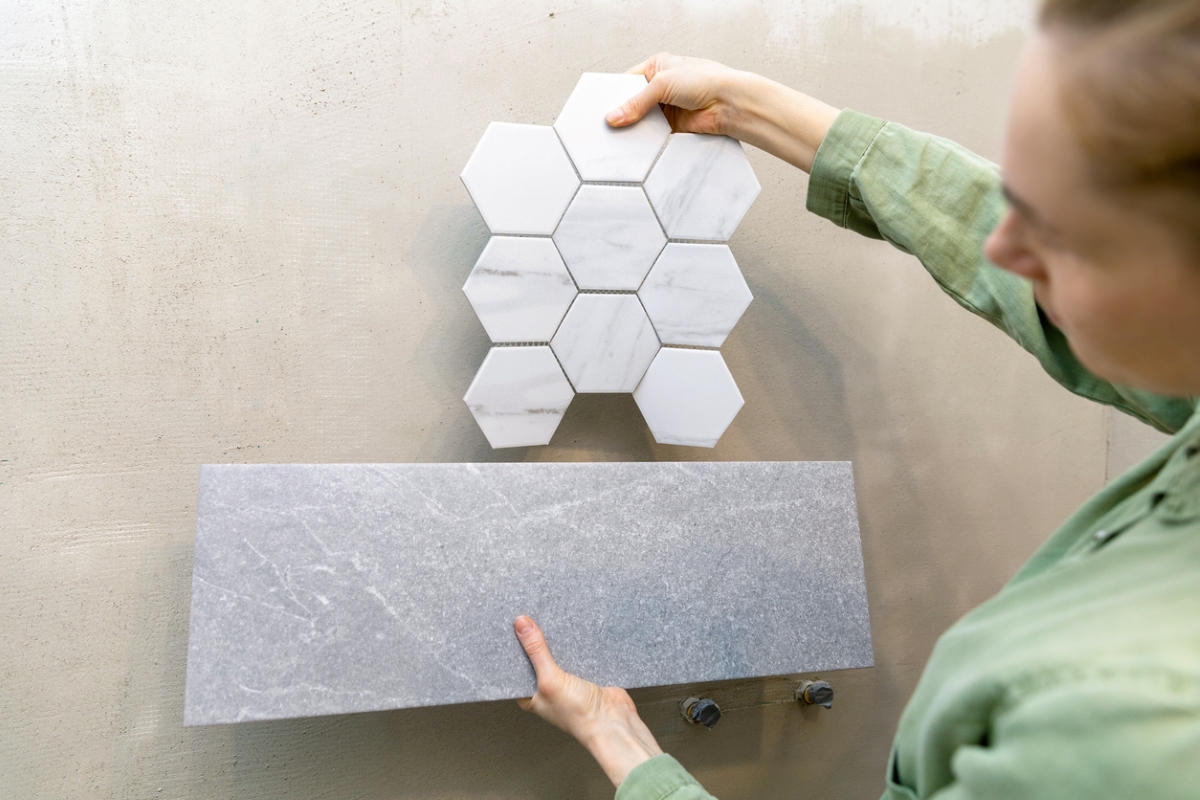
Creating a tile layout is largely a matter of personal preference; some of the most popular patterns include running bond, herringbone, and diagonal. Whichever you choose, it’s important to lay the tiles out in such a way that the finished project looks even and level.
For most installations, the easiest way to begin tiling a wall is as follows:
- Measure the wall height and divide it in half. Use a level to draw a level line at this height.
- Measure the width of the wall, divide it in half, and use a level to draw a plumb line at this mark.
- Use screws and a drill to attach a straight piece of scrap wood on the wall so that its top edge lines up directly on the level line.
This board will act as a ledger, allowing the DIYer to start placing tiles on the wall in a straight, even line. Its location also ensures that the top and bottom rows of tile will be uniform, and the center line ensures that the tiles on either end of each row will be even as well. Once the tiles begin to set, remove the board.
STEP 4: Mix the thinset.
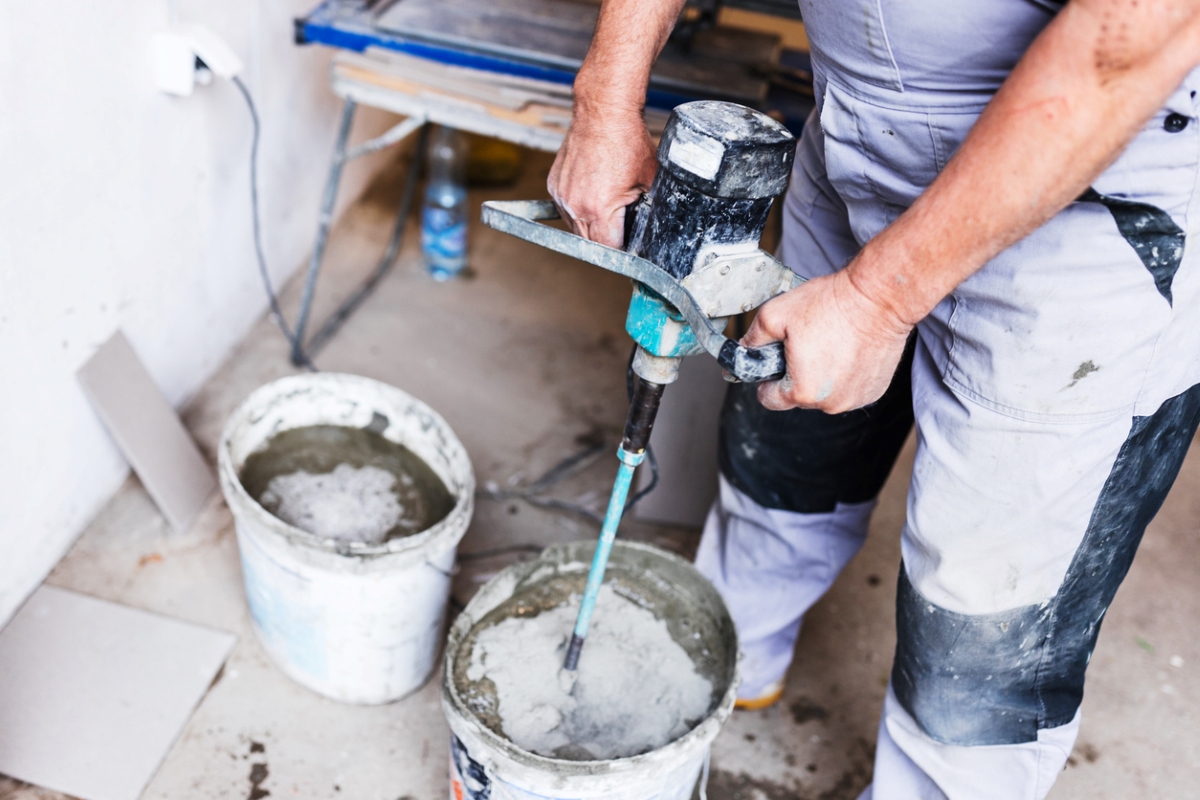
Bathrooms experience very high moisture and humidity levels, so it’s important to choose a tile mortar that’s waterproof and easy to work with. The mortar for this job is thinset.
Follow the manufacturer’s instructions regarding the water-to-powder ratio. Use the paddle and drill to blend the two together. The finished consistency should be similar to creamy peanut butter. Remember to wear a respirator mask to avoid breathing in any airborne particles.
Premixed thinset is also available. While it’s slightly more expensive, you won’t have to bother with figuring out the water-to-powder ratio, though mixing is still necessary.
STEP 5: Lay the tiles.
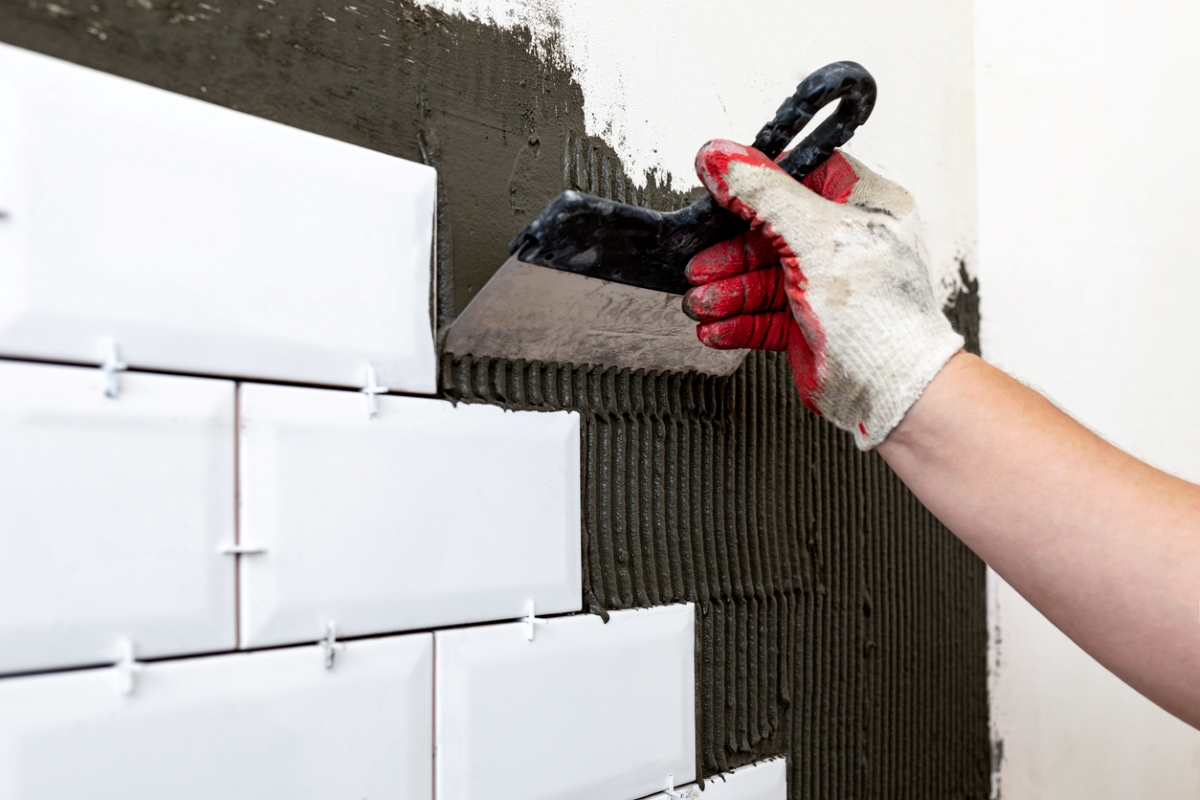
Start laying the tiles above the ledger board attached to the wall in Step 3. Use the trowel to apply thinset to the wall, working in small sections at a time. For large tiles, consider applying thinset to the back of the tiles as well.
Place the bottom edge of the tile on the ledger board and position it so the center line on the wall is directly in the middle of the tile. Firmly press the tile into the thinset. Repeat the process on either side of this tile, using tile spacers to maintain even spacing.
Either end of the row will likely require a cut tile. Measure the gap and cut the tile on a tile cutter or wet saw (depending on the material), and install it on the wall. It’s best to complete each row before moving up to avoid thinset hardening along the way.
Repeat this process row after row, maintaining the chosen pattern and cutting tiles to fit when necessary. The top row may also require cutting to ensure that the tiles fit nicely.
Once the top half of the wall has been tiled, remove the ledger board and repeat the process from the top down, using spacers to maintain the consistent spacing and pattern. Let the tile sit for at least 24 hours before grouting.
STEP 6: Apply the grout with a float.

Note: If you’re installing natural stone, marble, or another porous tile, move on to Step 7 and then come back to Step 6. Porous tiles need to be sealed before the grout is applied.
After at least 24 hours, it’s time to grout the tiles. Mix the powder with water in a bucket, following the manufacturer’s instructions. A thick waffle-batter consistency is ideal. Use the float to apply the grout to the grout lines in a 45-degree angle before dragging the float along the lines to smooth out any lumps.
Wait 15 to 30 minutes to allow the grout to set. Use a damp sponge (not a wet sponge) to wipe off excess grout from the surface of the tile.
RELATED: Solved! How Long Does Grout Take to Dry?
STEP 7: Once the grout cures, seal the tile.
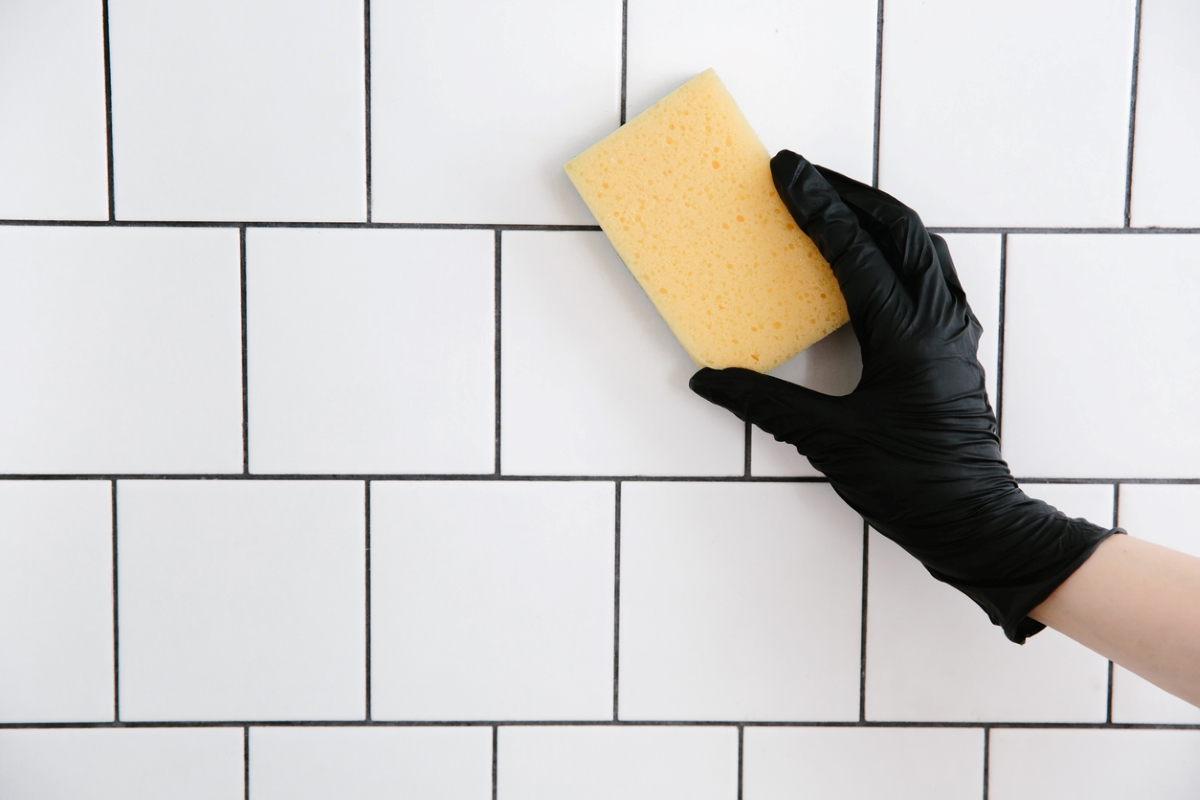
Grout needs about 72 hours to cure completely. Once it does, the grout needs to be sealed. To seal the grout and tiles, apply sealer to a sponge and rub it into the surface, paying special attention to the grout lines.
Wait 1 hour and apply a second coat of sealer. After the second coat, give the sealer up to 48 hours to cure (check the manufacturer’s instructions) before using the space.
RELATED: See Our Top Picks For The Best Grout Sealers, Including Some Expert Tips
FAQs
That’s a lot of info about how to install bathroom wall tile, but there may still be some lingering questions. The following are some of the most frequently asked questions about the topic.
Q: Can you tile over wall tiles in a bathroom?
You can, but it’s not always advisable. This method often requires etching the existing tile and using a special epoxy thinset. This thinset can be difficult to work with and tiles may slide, but if done correctly, it’s possible to tile over existing tiles.
Q: How do you tile a shower wall?
The main difference between tiling a shower wall as opposed to a standard bathroom wall is that shower walls require a waterproof membrane to be installed behind the tile. Otherwise, the steps are the same.
Q: What’s the best kind of tile for bathroom walls?
Almost any type of tile will do for bathroom walls. Wall tile doesn’t need to be as strong or durable as floor tile, so there aren’t many limitations. Classic choices include ceramic and porcelain, though marble is also a great option.
Final Thoughts
A bright expanse of new tile is a great way to reinvigorate a tired bathroom, and with these tried-and-true methods, installing bathroom wall tile doesn’t have to be so difficult. Just be sure to prepare the walls, find the ideal tile layout, and maintain consistent spacing throughout the project to ensure beautiful results. Once done, those wall tiles will provide that luxury vibe for years and years to come.


